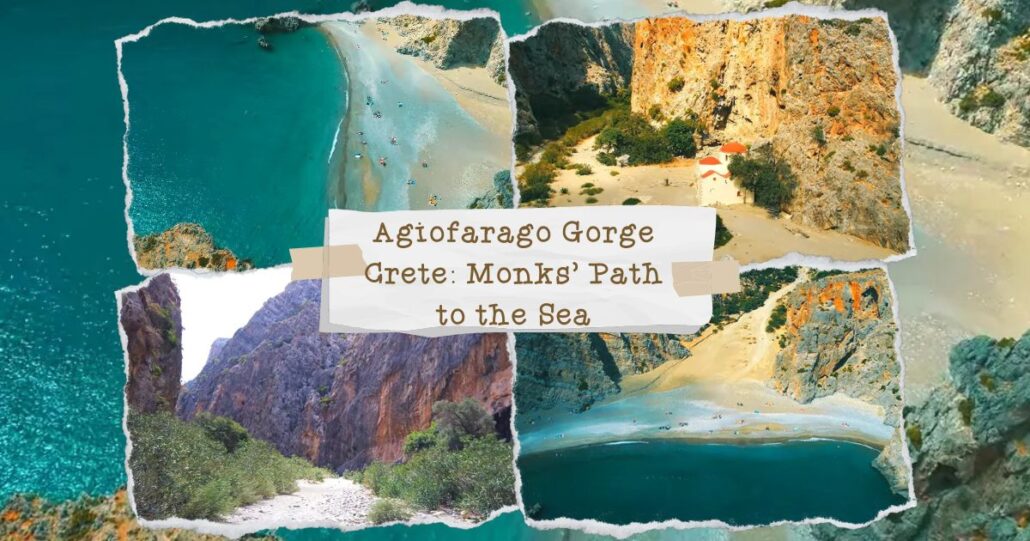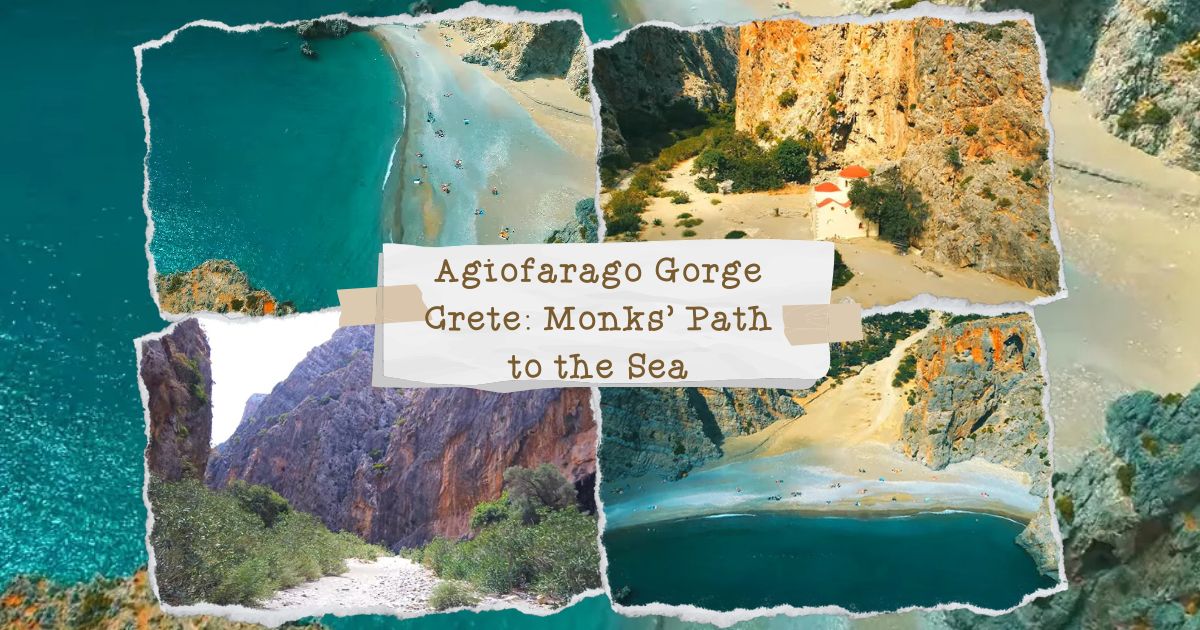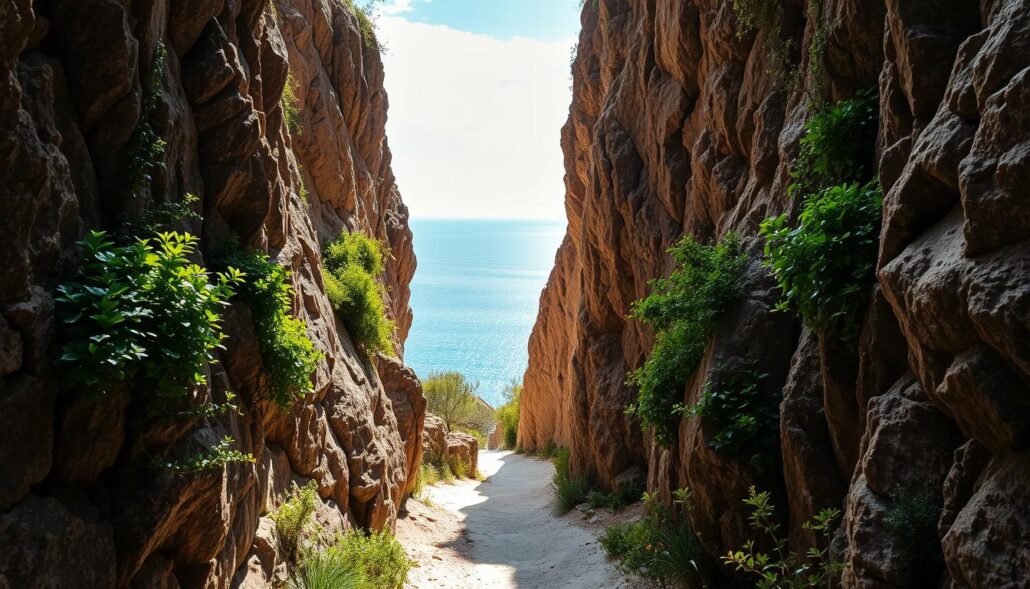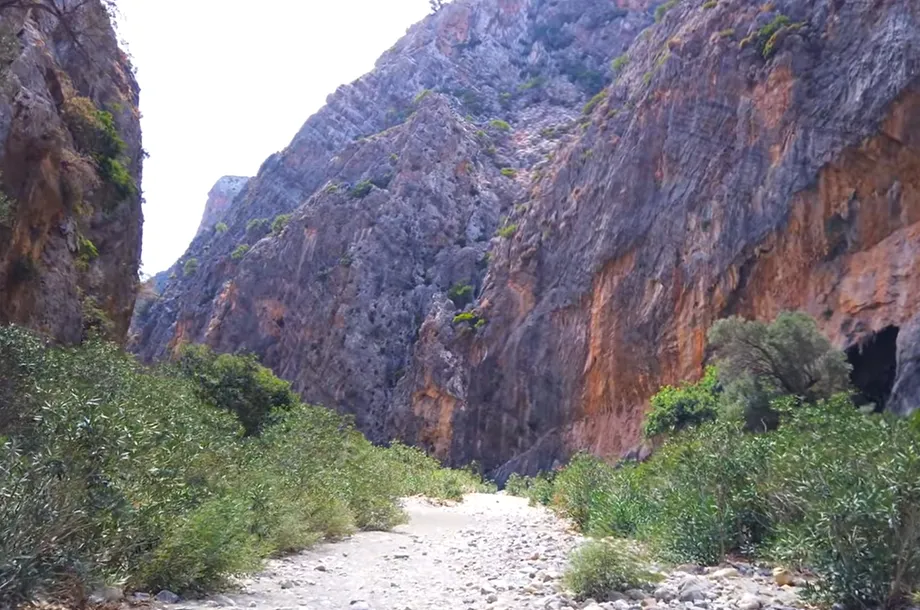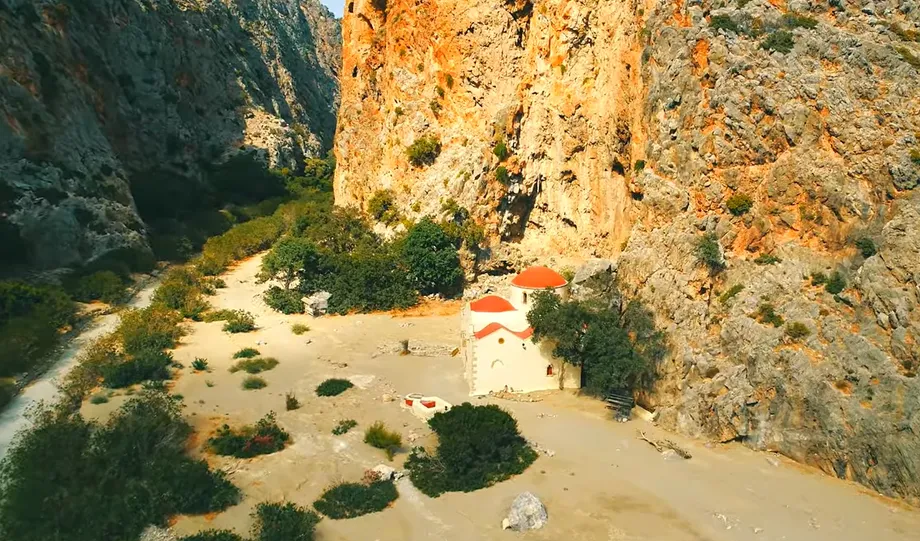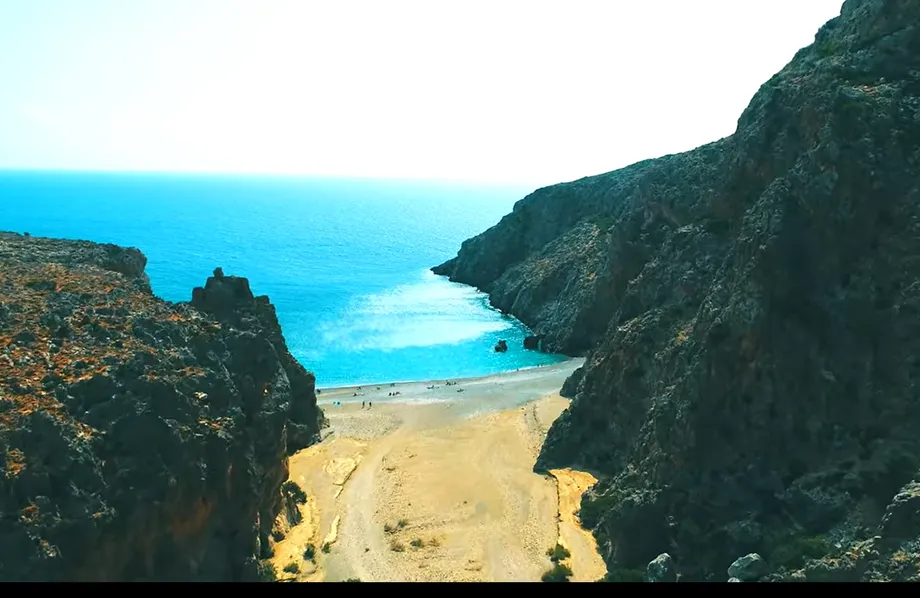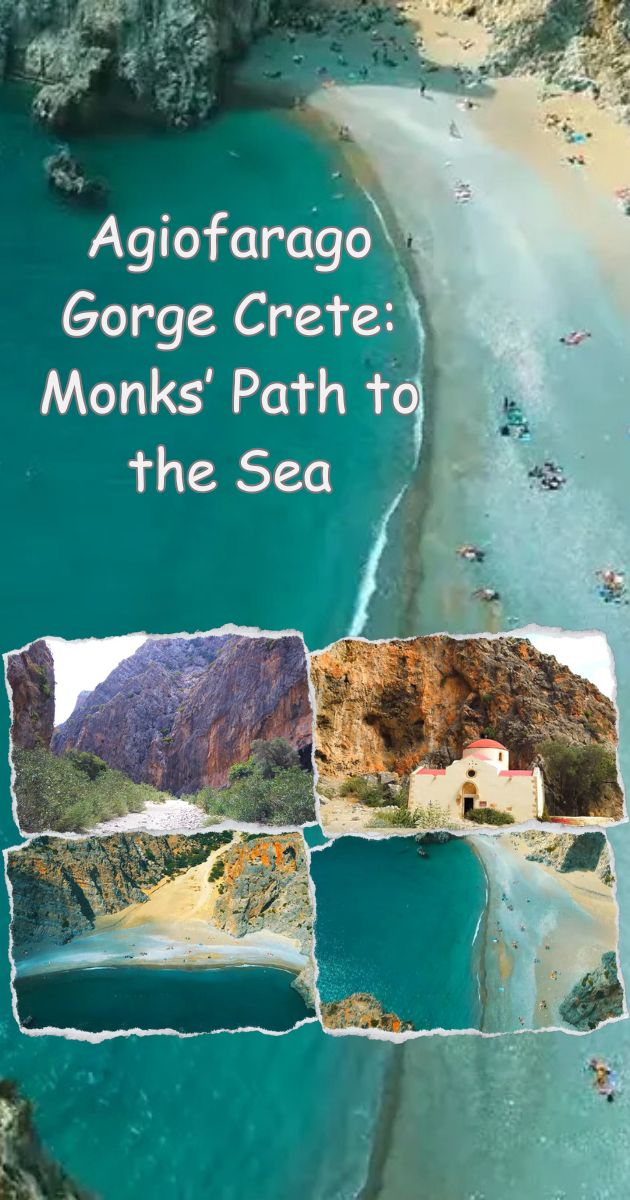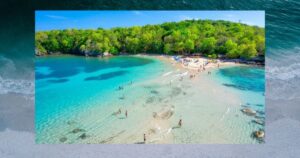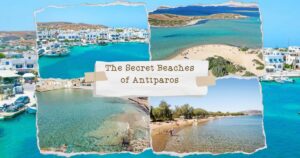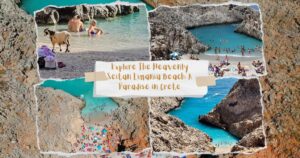Agiofarago Gorge Crete: Monks’ Path to the Sea
What if one of Europe’s most awe-inspiring natural wonders isn’t found on a crowded tourist trail, but hidden in plain sight along southern Heraklion’s coastline? This 3.5-kilometre ravine, shaped by ancient streams and cloaked in monastic lore, challenges the very idea of what makes a destination ‘undiscovered’.
Tucked 75-80km from Crete’s capital, this dramatic canyon reveals limestone walls soaring 300 metres high nature’s own cathedral. Its name Agiofarago, translating to ‘Gorge of the Saints’, hints at the hermits who once sought solitude in its caves. Today, hikers traverse the same paths where sandals once whispered prayers into stone.
The journey culminates at a secluded beach, where crystal waters meet cliffs scarred by millennia of weather. Unlike typical Mediterranean hotspots, this untamed sanctuary offers raw beauty rather than sun loungers. Its story intertwines geology and spirituality – two streams merging near Saint Kiriaki’s chapel, much like the land’s physical and mystical elements.
Why does this remote marvel captivate modern explorers? Perhaps because it proves some treasures remain untouched by time. As you read on, you’ll discover how to navigate its trails and decode the whispers of those who walked them centuries ago.
Discover Agiofarago Gorge Crete
Tracing the footsteps of ancient hermits, this rugged landscape offers more than a walk—it’s a passage through time. Whether you’re lacing up boots or boarding a vessel, adventure here comes in two flavours: earthy trails and azure waves.
Hiking the Monks’ Path and Scenic Walks
The 1.5-kilometre route winds through sun-dappled cliffs where weathered stones still echo with chanted prayers. Most walkers complete the journey in 25-35 minutes, though you’ll want to pause at every turn—nature’s architecture demands admiration. Sturdy trainers or hiking boots prove essential for navigating the uneven terrain, particularly when summer heat bakes the limestone.
Local guides often quip: “This path remembers sandals better than shoes.” Bring at least two litres of water per person, as shade becomes scarce after 10am. Morning explorers catch the coolest temperatures and softest light filtering through the ravine.
Access by Foot and Boat Options
Four-wheel drives handle the final 4km gravel stretch best, passing Odigitria Monastery before a crucial right turn. Miss the junction, and you’ll wind up in Kali Limenes—pleasant, but not your destination. Alternatively, boat services from Matala or Agia Galini offer seaward approaches, with captains sharing tales of hidden coves en route.
Day trippers should note: the last return vessels typically depart by 5pm. Combine both access methods for a full-circle experience—hike in, sail back, or vice versa. Either way, you’ll understand why this place shaped spiritual seekers for generations.
Unveiling the History and Spiritual Legacy
Time seems to linger in the limestone walls here, each crevice guarding stories older than written memory. This landscape whispers of lives shaped by solitude and stone, where faith carved paths through raw wilderness.
Silent Dwellers of the Cliffs
Three hundred spiritual rebels once called these caves home, their lives marked by radical isolation. Each dweller occupied separate hollows in the cliffs, meeting just once a year in Goumenospilios Cave. Here, they’d count absent brothers using designated stones – a haunting ritual marking lives surrendered to the wilderness.
Architecture of Devotion
The Odigitria Monastery stands as a medieval marvel, its whitewashed walls framing the legendary Tower of Xopateras. In the 19th century, ex-priest Ioannis Markakis staged a daring defence here. With just 30 men, he held the tower against Ottoman forces for days – a tale still told in nearby villages.
Echoes in the Name
Why ‘Gorge of the Saints’? The answer lies in layers. Bronze Age ruins reveal ancient worship sites, while Saint Anthony’s church later unified hermits into communities. As one local historian notes: “This land doesn’t just hold history – it breathes it through every chapel and collapsed tomb.”
Experiencing Natural Beauty and Outdoor Adventure
Imagine sunlight bouncing off limestone like nature’s disco ball, turning every swim into a liquid light show. This coastal wonderland serves up equal parts adrenaline and serenity – if you know where to look.
Exploring Steep Cliffs, Caves and Secret Beaches
The beach here plays hide-and-seek with the elements. Sheer rock walls frame a crescent of pebbles and sand, their shadows creating natural sun shelters. Brave swimmers can duck beneath the iconic stone arch – its underwater world rivals any aquarium.
Adventure lurks above and below. Climbers test skills on weathered cliff faces while cavers probe hidden chambers. Don’t miss Vourvoulitis, a seawater sinkhole where daring explorers can plunge into geological history. “It’s like swimming through a whisky tumbler,” one regular describes the circular cave.
Essential Tips for a Safe and Enjoyable Visit
Pack like you’re escaping civilisation: 2 litres of water per person, energy snacks, and reef-safe sunscreen. Sturdy trainers grip better than sandals on shifting stones. Park away from fig trees – goats fancy both foliage and car roofs.
Consider joining organised tours for hidden insights. As local guide Eleni notes: “Our cliffs tell better stories than any museum.” Leave only footprints – this wild beauty depends on visitors respecting its fragile balance.
Conclusion
In a world where untouched landscapes grow rare, this hidden gem offers a timeless escape. Whether you arrive by car along dusty tracks or glide in by boat, the journey rewards with pebble beaches framed by cliffs that have sheltered seekers for centuries. Pack sturdy footwear and enough snacks – the area demands respect as much as admiration.
Those exploring the monastery road or coastal villages like Kali Limenes discover more than scenery. You’re walking through living history, where every cave whispers tales of solitude. The crisp waters here don’t just refresh swimmers – they mirror skies unchanged since hermits first sought refuge.
Remember to take rubbish when leaving. This protected landscape thrives when visitors tread lightly. As sunlight dips behind walls of stone, you’ll understand why this experience lingers long after your day ends.
Some places remind us how beauty and stillness can still coexist. This is one of them – a sanctuary where nature writes its own psalms in wind-carved rock.

